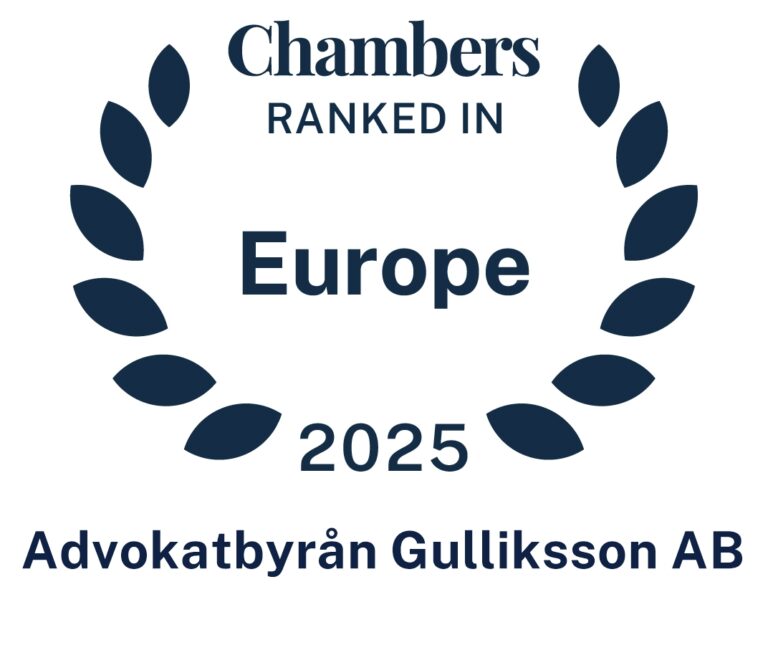This spring, the General Court delivered a ruling in the case T-157/23 that shed light on how reputation of a trademark is acquired and lost. A registered EU trademark grants protection against the registration of identical or similar marks that are confusingly similar in relation to identical or similar goods and services according to art. 8(1) EU Trade Mark Regulation 2017/1001 (EUTMR). However, marks with reputation enjoy an extended protection.
The exception for trademarks with reputation can be found under art. 8(5) EUTMR. A mark with reputation has protection against the registration of similar or identical marks, even if the marks would cover dissimilar goods and services. These cases do not require likelihood of confusion. In order for an opposition to be upheld on the basis of art. 8(5) EUTMR there are three cumulative requirements that need to be met. Firstly, the earlier mark needs to have reputation, secondly the marks need to be similar or identical and thirdly there needs to be a risk that if the applied for mark were registered it would with undue cause take unfair advantage of the earlier mark’s reputation or damage its distinctive character.
The purpose of art. 8(5) EUTMR is to protect the advertising function of a trademark. Other than indicating commercial origin, a trademark is also able to convey messages such as assurances of quality. Creating the link between a trademark and such messages will often require significant investments. The brand or image linked with the trademark is independent of the goods and services covered by the trademark. Therefore, the aim of art. 8(5) EUTMR is not to protect the general public from confusion of commercial origin of a trademark, but rather to protect the investments that have gone into creating the reputation from other marks exploiting it.
It is established by case law that in order to assess whether a trademark has reputation, an assessment of the following is made: the trademark’s market share, how the mark has been used in terms of intensity, duration and geographical extent, as well the size of the investment made to promote the trademark. The aforementioned are examples of what can constitute evidence. It is not a requirement to provide evidence regarding all the listed factors in order to prove that a trademark has reputation. In the General Court’s decision in the case T-157/23, they explain how this evidence should be treated when assessing whether a mark holds reputation. The Court’s findings will be explained in the following.
The case in question regarded the opposition of the EU trademark application for the mark “Joyful by nature”. The trademark application was made by Kneipp GmbH (Kneipp) and covered goods and services in classes 3, 4, 35 and 44. More specifically the list of goods and services contained among others cosmetics; perfumes; perfume candles and human hygiene and beauty care in classes 3, 4 and 44 as well marketing and promotion services in class 35. The application was opposed by Maison Jean Patou (Patou), a French luxury fashion company that sells clothes and cosmetics and is the owner of the earlier EU-trademark “JOY” registered for goods such as perfumes and fragrances in class 3.
Patou’s opposition was upheld by the Opposition Division on the grounds of art. 8(5) EUTMR. Kneipp appealed the decision to the Board of Appeal who upheld the opposition except in regards to services relating to marketing in class 35. This decision was then appealed to the General Court.
Kneipp appealed the Board of Appeal’s decision, arguing that the cumulative requirements under art. 8(5) EUTMR to oppose a trademark application were not met. However, what is most interesting in the General Court’s ruling is the reasoning regarding whether Patou’s mark held reputation. Kneipp disputed the Board of Appeal’s finding that Patou’s earlier mark held reputation as Patou had not established that the earlier trademark had a sufficient market share which they claimed is primarily important for the assessment. They stated that the market share of the earlier mark was limited as it was used for products sold to luxury retailers disregarding a large part of the relevant public. The Court maintains that while the market share of a trademark is a factor when assessing reputation, there is no requirement that a certain percentage of the relevant public is able to recognize the trademark. The Court further holds that it is sufficient for the mark to be known by a substantial part of the relevant public in the relevant territory. The Court clarifies that there many factors that are assessed when determining whether a mark has reputation, but it is not a requirement that all factors are proven. Rather the Court makes an overall assessment of all the factors which include how the mark has been used in terms of intensity, duration and geographic extent, market share and the investment made to promote and use the trademark.
Kneipp further disputed that the evidence that Patou provided demonstrates that the earlier mark has reputation, since it shows a decline in sales between 2013 and 2019. According to the Court, when establishing reputation, the owner of the earlier mark must demonstrate that the mark held reputation on the date that the opposed trademark application was filed, in this particular case it was 29 November 2019. The Court states that since reputation is acquired progressively, evidence that pre- or post-dates the application’s filing date may still have evidentiary value if it gives context to the reputation on the date in question. Its evidentiary value may differ depending on how far away the evidence is dated from the date in question.
Patou maintained that their trademark held reputation on the date in question. Patou’s evidence ranged from sales invoices, list of multiple distributors in multiple member states, advertising campaigns, social media and news articles. Patou also presented evidence that included prestigious awards, given Patou’s perfume “JOY”. The awards included, among others, “Scent of the century” given by UK FiFi Awards in 2000, and other prestigious mentions in magazines such as Vogue. This, according to the General Court, is the result of the general public’s high level of recognition of that mark and the marks long standing use. Despite the awards dating back several years and the downturn in sales, the Court did not find that this negated that the mark did have a high degree of reputation in the past. The Court states that it must therefore be assumed that there was a degree of surviving reputation on the date in question, even if the reputation may have diminished over time. The Court establishes that just as reputation is acquired progressively it is also lost gradually.
Overall, the Court found that the rest of the cumulative requirements stipulated under art. 8(5) EUTMR were also met and Kneipp’s appeal was therefore dismissed. This decision is of interest for trademark practitioners and proprietors of marks with reputation as it shows that evidence that pre-dates the filing date of the contested trademark application may still be able to prove that the mark has reputation. Moreover, since reputation is lost gradually this means that a mark’s reputation is not as vulnerable to a period of slower sales, as is demonstrated by the General Court’s decision in this case.






